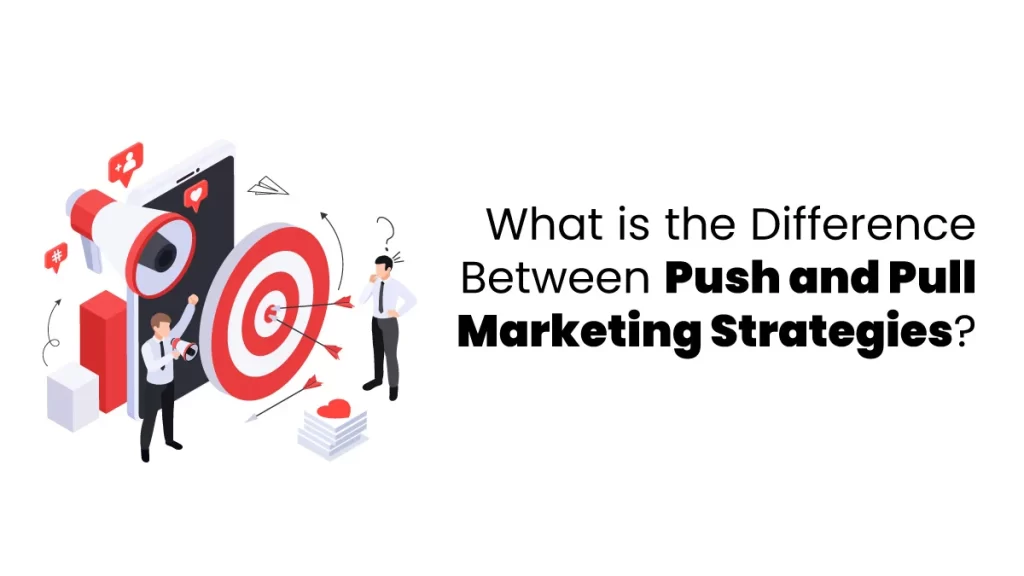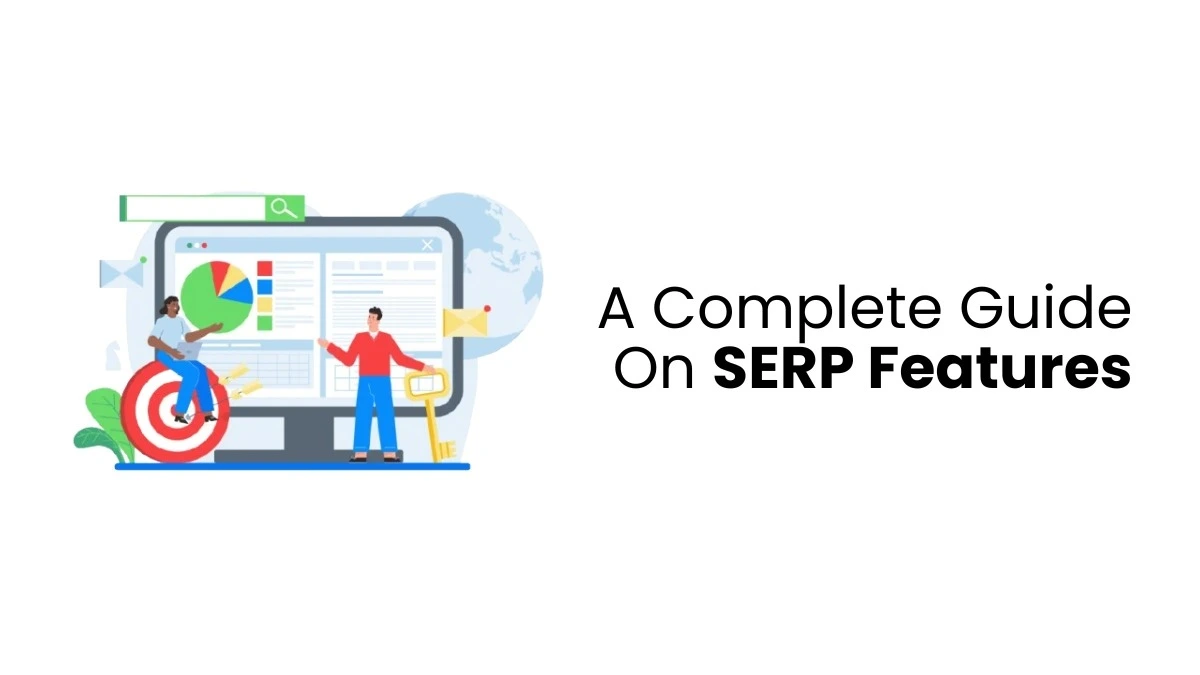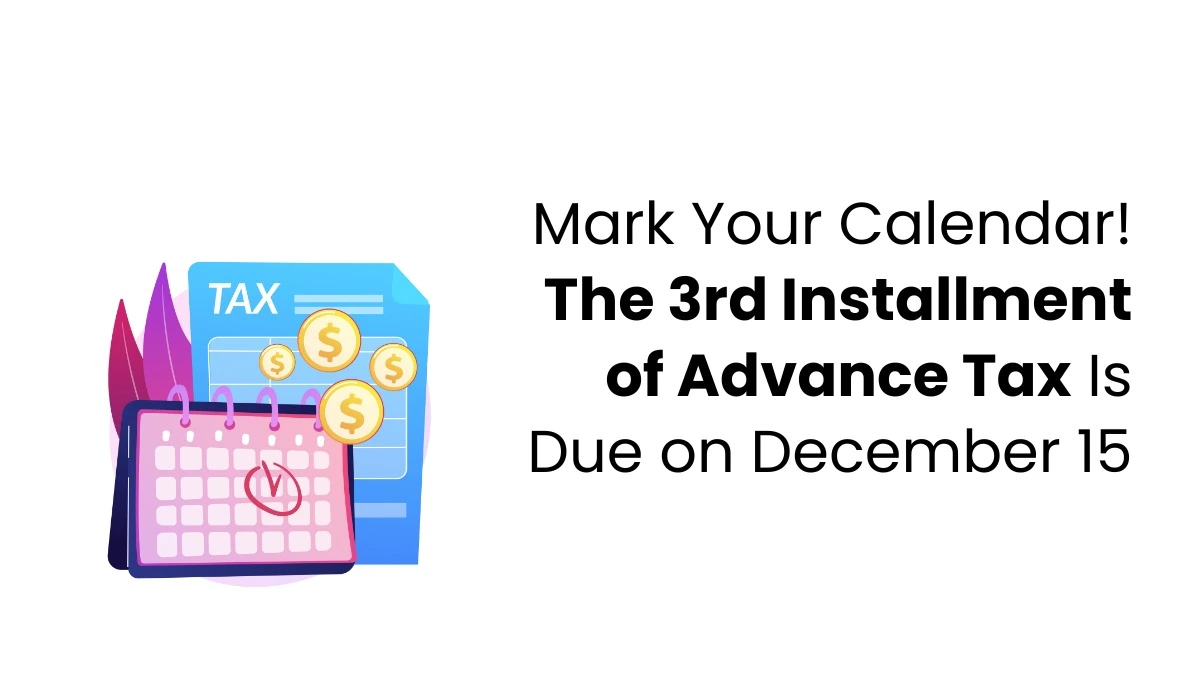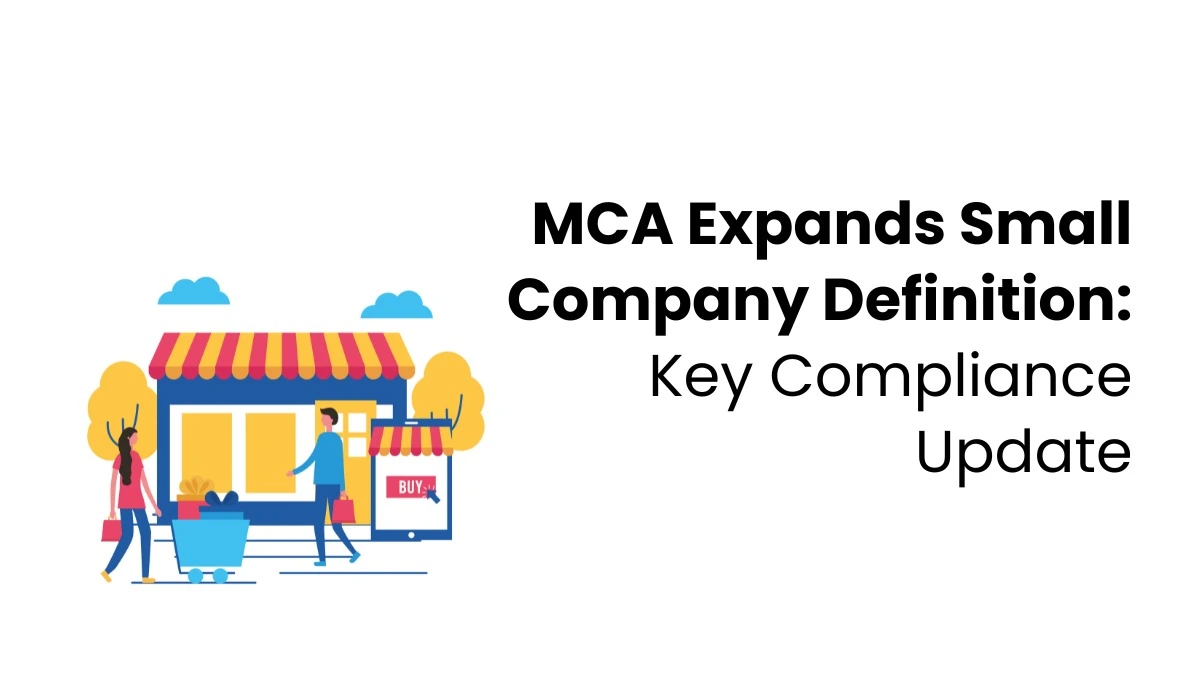In today’s competitive world, creating a great product is just the first step. What really matters is how you take that product to your audience. Do you approach them directly, or do you spark their interest so they come to you?
These days, marketing isn’t just about getting seen; it’s also about being relevant and timely.
To determine the success of your campaign, you have to connect with the right customers rather than having a huge budget. Some sell products directly to customers, while others promote their products and make customers want to buy them.This approach is closely related to the push and pull marketing strategies, where businesses either push products to customers or create demand so customers come looking for them.
If you understand the difference between push and pull tactics, your marketing will work much better. You won’t waste time or effort—you’ll reach the right people faster and more easily.
It’s something every marketer should know. And if you’re just starting to learn digital marketing, this is one of the first things you should get familiar with. It helps you use what you learn in real situations, not just in theory.
Before we talk about techniques, let’s look at how these two strategies function and why picking the proper one can make a big difference in your marketing outcomes.
What is Push Marketing?
Push marketing is a promotional strategy where businesses actively promote their products or services to potential customers, often through traditional advertising and sales tactics, rather than waiting for customers to seek them out.
This method makes sure the product is always on the shelves in shops and supermarkets. Even if customers didn’t plan to buy it, they might see it and decide to try it.
Push strategy is mostly used for daily-use items like soaps, chips, or soft drinks—things people buy often without much thinking.
To make this work, companies may give discounts to shops, run in-store offers, or use posters, banners, and even Meta ads to drive more sales. The main idea is to get sellers to stock and promote the product. Push marketing uses TV, radio, newspapers, phone calls, email marketing, SMS, and social media platforms to promote products directly and encourage quick buying.
Real-Life Example of Push Marketing:
Imagine a company that makes a new type of shampoo. Instead of waiting for people to ask for it, the company first contacts big stores, supermarkets, and beauty shops.
They offer the shopkeepers a good deal—like discounts, free samples, or a “buy 10 get 2 free” offer—just to get the shampoo on the shelves. They may even give display boards or stands to catch the customer’s eye.
Now, when you walk into the store, you see the shampoo on display, even though you didn’t come in looking for it. You pick it up and try it.
That’s push marketing—the company “pushed” the product to the store, hoping you’d buy it once you saw it.
Common Push Marketing Strategies
Push marketing uses different methods to get products into stores and in front of customers. Here are some common ways it’s done:
- Give discounts to shops to encourage them to sell the product.
- Put banners or stands in stores to draw customers’ attention to the product.
- Send salespeople to stores to talk about the product and get it on shelves.
- Offer rewards to shopkeepers if they sell more of the product.
- Ask shops to display the product in a visible place so people can see it easily.
- Run pay-per-click advertising campaigns to boost product visibility online and support in-store promotions quickly.
What is Pull Marketing Strategy?
Pull marketing is when a business tries to get people interested in a product so they come looking for it on their own.
Instead of first convincing shops to sell the product, the company focuses on attracting customers. When many people want the product, shops and sellers will start selling it because they know it will sell well.
To do this, companies use things like:
- Advertisements
- Social media posts
- TV or online videos
- News or influencer mentions
The goal is to make people know about the product, like it, and ask for it. This “pulls” the product through the market, starting from the customer side.
So, in pull marketing, people want the product first, and then shops follow.
Real-Life Example of Pull Marketing:
Let’s say a new mobile phone is launched, and the company shows cool ads on TV, YouTube, and Instagram. People see the phone, like how it looks, and hear good reviews about it.
Now, many people go to mobile shops and ask, “Do you have that new phone I saw online?”
Because of this demand, shopkeepers start keeping the phone in stock.
This is pull marketing — the company didn’t tell the shops to sell it first. Instead, they created interest among customers, and the customers pulled the product into the market by asking for it.
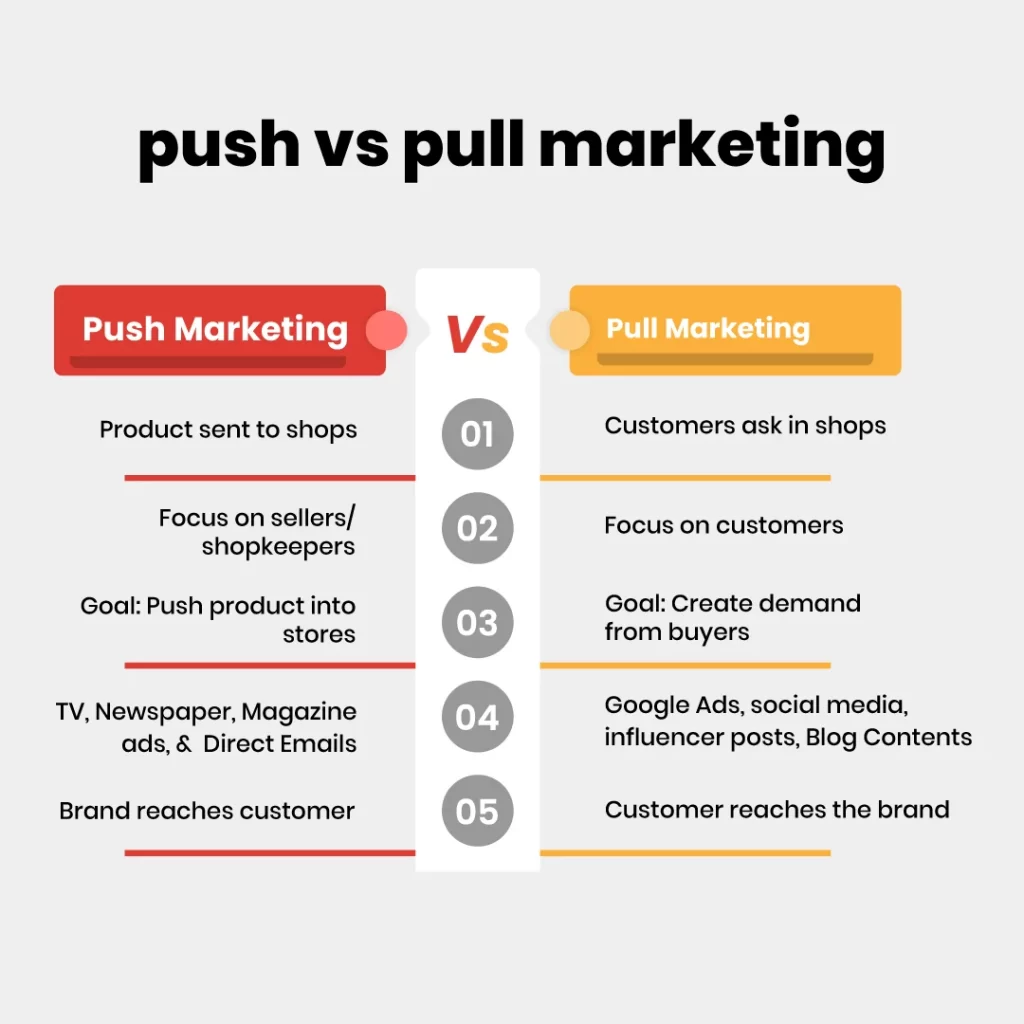
Common Pull Marketing Strategies
Pull marketing is about making people want the product and ask for it. Here are some easy ways companies do this:
- Show ads on TV or online so people see and remember the product.
- Post on Facebook, Instagram, or YouTube to get people interested.
- Ask famous people to talk about the product to encourage others to try it.
- Share helpful or fun things online to help people like the brand.
- Make the brand look good and trustworthy so people ask for it in shops.
Difference Between Push And Pull Marketing
To better understand how businesses reach their customers, let’s take a closer look at the push and pull marketing strategy and how the two approaches differ.
| Push Marketing | Pull Marketing |
| Product sent to shops | Customers ask in shops |
| Focus on sellers/shopkeepers | Focus on customers |
| Goal: Push product into stores | Goal: Create demand from buyers |
| TV, Newspaper, Magazine ads, & Direct Emails | Google Ads, social media, influencer posts, Blog Contents |
| Brand reaches customer | Customer reaches the brand |
Real Life Comparison Table
| Situation | Push Strategy | Pull Strategy |
| A new soap is launched | The company asks shops to sell it | The company shows ads to make people ask for it |
| Customer’s buying reason | Sees it in the shop and tries it | Heard about it and came to buy it |
| The company’s first step | Targets shopkeepers and sellers | Targets regular people through media |
Push and Pull Marketing – Which One Should You Use for Your Business?
Both push and pull marketing help you get more customers and grow your business. But depending on your goal, one part of the push and pull strategy in marketing might work better than the other.
Use Push Marketing When:
- You need quick results
- You’re launching a new product
- You’re running a limited-time offer or discount
- You want to sell fast
Push marketing works fast but can also be more expensive (like paying for TV ads or shop banners).
Use Pull Marketing When:
- You have more time and patience
- You want to build trust and brand name
- You’re okay with slow but steady results
Pull marketing is usually cheaper (using social media, videos, etc.) but takes longer to bring in customers.
Best Idea? Use Both!
Most smart businesses mix both push and pull strategies.
Use push when you need quick sales, and pull when you want long-term growth and trust.
This way, you get the best of both worlds!
Conclusion
Understanding the difference between push and pull marketing helps you choose the right strategy based on your business goals. Whether you want quick results or long-term brand growth, knowing when to use each method can make your marketing more effective.
If you’re looking to learn these strategies in a practical and easy-to-understand way, Finprov is the right place for you. Finprov’s advanced digital marketing course provides hands-on training in real-world strategies, tools, and techniques, making it ideal for both beginners and experienced professionals. Start your journey with Finprov and build the skills needed to grow in today’s digital world.
FAQs
1. What does push marketing mean in simple words?
Push marketing is when a company tries to sell its product by placing it in retail outlets and instructing sellers to promote it to customers.
2. What is pull marketing in simple words?
Pull marketing is when a company makes people want the product by showing ads or posting online. Customers then go and ask for it in shops.
3. Which strategy should I use for my small business?
If you want more sales, use push marketing. If you intend to build a brand slowly, you can use pull marketing. You can also use both for small businesses.
4. Is pull marketing cheaper than push marketing?
Yes, pull marketing is cheaper because it uses online methods like social media. But it takes more time to show results.
5. Why is it important to learn both push and pull strategies?
If you know both strategies, you will get better results according to your current scenario.

